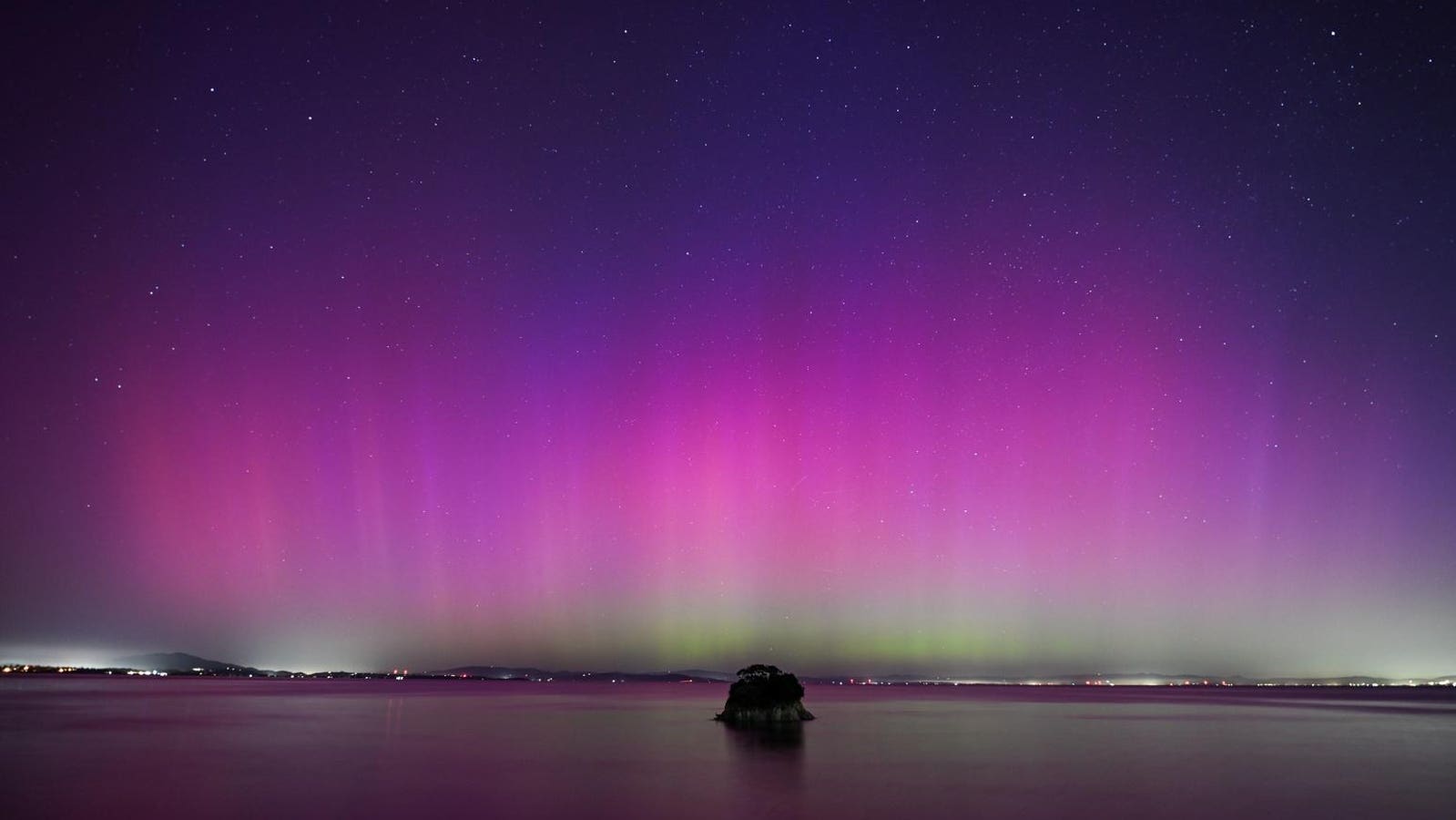
Northern Lights Alert
On Friday, an increased number of northern U.S. states may witness the breathtaking aurora borealis. This event is anticipated due to high-velocity winds emanating from a specific area on the sun, potentially impacting Earth’s magnetic field, as per the National Oceanic and Atmospheric Administration (NOAA).
According to forecasters, these high-speed solar winds may disrupt the Earth’s magnetic field, leading to spectacular displays of the northern lights. … [+]
Important Information
NOAA predicts a Kp index of five on a scale up to nine for Friday evening, indicating that the northern lights could be visible farther south than typical, offering a captivating view for lucky observers.
Forecasters noted that a coronal hole high-speed stream—comprised of winds from a cooler, less dense segment of the sun—may generate a geomagnetic storm on Friday, which could result in the northern lights being seen in even more southern locations, as indicated by NOAA’s three-day forecast.
This weekend, auroral activity is expected to diminish, with a Kp index forecasted at three for Saturday and Sunday.
Stay Updated with Forbes Alerts: We are introducing text message alerts to keep you informed about major news stories. Text “Alerts” to (201) 335-0739 or sign up here.
Where Can You See the Northern Lights?
Alaska is expected to have the highest likelihood of sighting the northern lights. Meanwhile, regions in northeastern Washington, northern Idaho, Montana, North Dakota, northern Minnesota, northern Wisconsin, and Upper Michigan have a moderate chance. States such as Wyoming, South Dakota, northern Iowa, northern New York, New Hampshire, Vermont, and Maine have an even lower probability of viewing the lights (see the visibility map below).
Visibility Map for Friday Night.
Tips for Viewing the Northern Lights
NOAA advises finding a high, unobstructed location away from city lights to enhance your chances of observing the night sky. The optimal viewing time is generally between 10 p.m. and 2 a.m. local time. Under the right conditions, the aurora borealis can be visible from as far as 600 miles away.
Capturing the Northern Lights on Camera
According to National Geographic, it is recommended to use a wide-angle lens paired with a high ISO setting and to focus on the furthest point possible. For smartphone users, enabling night mode is crucial, as mobile cameras can capture the northern lights even when they are not perceivable to the naked eye.
Background Insights
Increased sightings of the northern lights are anticipated throughout 2025, as solar activity is expected to reach its peak, known as “solar maximum,” according to NASA. This solar cycle lasts approximately 11 years, transitioning between “solar minimum” and “solar maximum,” the latter recently reached in October 2024. Phenomena like solar flares—outbursts of energy from the sun—and coronal mass ejections—large bursts of solar plasma—create the auroral display when electrons from these events interact with air molecules, emitting light particles, as explained by NOAA.
Additional Resources









